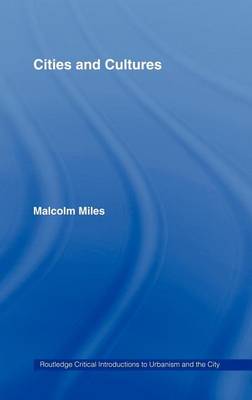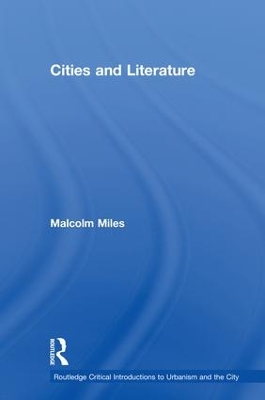Routledge Critical Introductions to Urbanism and the City
2 total works
Cities and Cultures is a critical account of the relations between contemporary cities and the cultures they produce and which in turn shape them. The book questions received ideas of what constitutes a city's culture through case studies in which different kinds of culture - the arts, cultural institutions and heritage, distinctive ways of life - are seen to be differently used in or affected by the development of particular cities. The book does not mask the complexity of this, but explains it in ways accessible for undergraduates.
The book begins with introductory chapters on the concepts of a city and a culture (the latter in the anthropological sense as well as denoting the arts), citing cases from modern literature. The book then moves from a critical account of cultural production in a metropolitan setting to the idea that a city, too, is produced through the characteristic ways of life of its inhabitants. The cultural industries are scrutinised for their relation to such cultures as well as to city marketing, and attention is given to the European Cities of Culture initiative, and to the hybridity of contemporary urban cultures in a period of globalisation and migration. In its penultimate chapter the book looks at incidental cultural forms and cultural means to identify formation; and in its final chapter, examines the permeability of urban cultures and cultural forms. Sources are introduced, positions clarified and contrasted, and notes given for selective further reading.
Playing on the two meanings of culture, Miles takes an unique approach by relating arguments around these meanings to specific cases of urban development today. The book includes both critical comment on a range of literatures - being a truly inter-disciplinary study - and the outcome of the author's field research into urban cultures.
This book offers a critical introduction to the relation between cities and literature (fiction, poetry and literary criticism) from the late eighteenth to twenty-first centuries. It examines examples of writing from Europe, North America and post-colonial countries, juxtaposed with key ideas from urban cultural and critical theories.
Cities and Literature shows how literature frames real and imagined constructs and experiences of cities. Arranged thematically each chapter offers a narrative which introduces a number of key thinkers and writers whose vision illuminates the prevailing idea of the city at the time. The themes are extended or challenged by boxed cases of specific texts or images accompanied by short critical commentaries; the structure provides readers with a map of the terrain enabling connections across time and place within manageable limits, and offers elements of critical discussion to serve a growing number of university courses which involve the intersections of cities and literature.
This volume offers access to literature from an urban perspective for the social sciences, and access to urbanism from a literary viewpoint. It is an excellent resource for both undergraduate and postgraduate students in the fields of urban studies and English literature, planning, cultural and human geographies, architecture, cultural studies and cultural policy.

